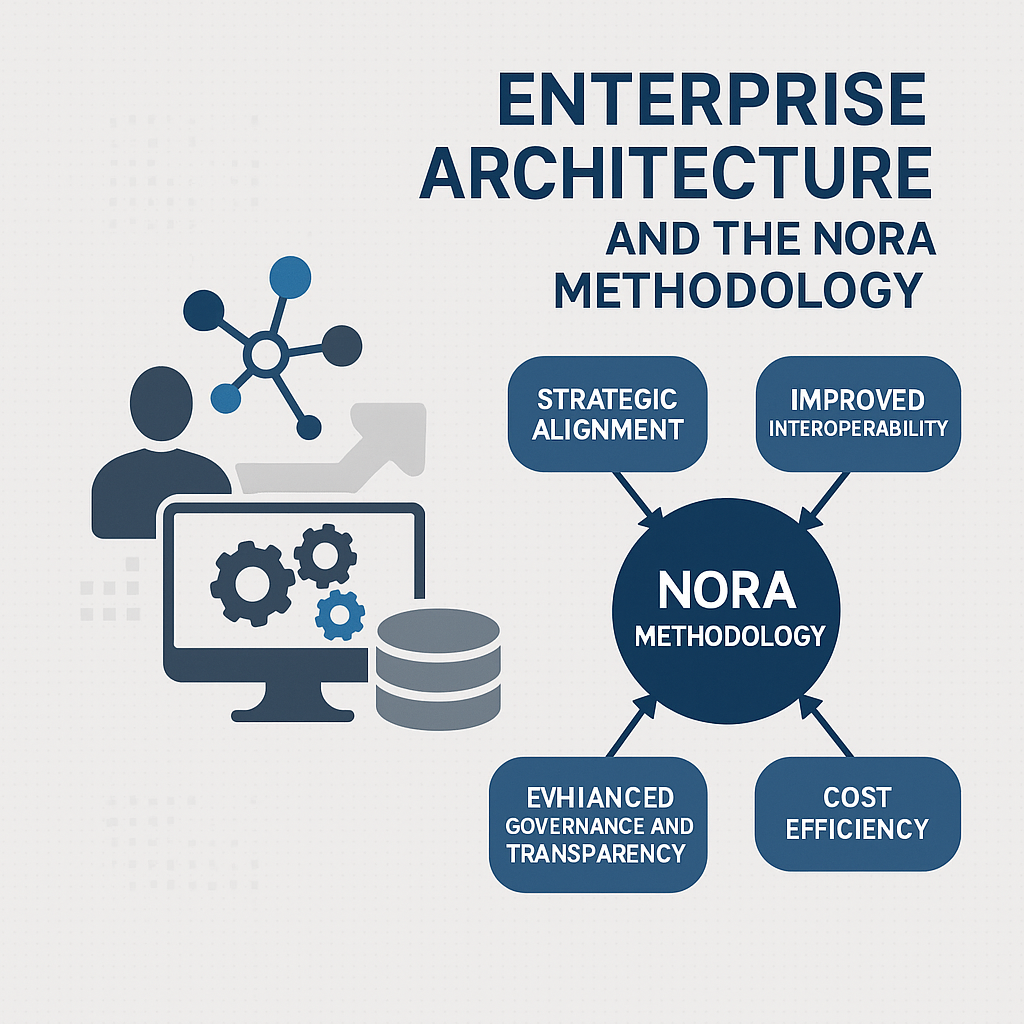Introduction
In the digital era, organizations face increasing complexity in aligning their business strategies with technology landscapes. Enterprise Architecture (EA) has emerged as a structured discipline to bridge this gap. One of the most recognized frameworks in this field is NORA (Nederlandse Overheid Referentie Architectuur)—a reference methodology originally developed for the Dutch government but widely adaptable across industries.
NORA provides a comprehensive set of principles, models, and standards that guide entities in building a coherent, efficient, and future-proof architecture. By applying its methodology, organizations can improve decision-making, enhance interoperability, and ensure that IT systems remain aligned with long-term strategic goals.
What is the NORA Methodology?
NORA is a reference architecture designed to support large entities, particularly in the public sector, in creating standardized and transparent IT environments. It outlines principles, guidelines, and best practices that help organizations establish clarity in how processes, data, applications, and technology interact.
Key aspects of the NORA methodology include:
- Standardization: Defining reusable frameworks and guidelines for IT systems.
- Interoperability: Ensuring different systems and organizations can work together seamlessly.
- Governance: Providing clear rules for decision-making, accountability, and compliance.
- Transparency: Making architecture principles visible and understandable for all stakeholders.
How NORA Helps Organizations
1. Strategic Alignment
Organizations often struggle to ensure that their IT initiatives directly support business goals. NORA provides a clear set of guiding principles that help decision-makers align technology investments with long-term strategy, reducing wasted resources and redundant projects.
2. Improved Interoperability
In many industries—especially government and regulated sectors—different systems need to communicate efficiently. NORA encourages common standards and protocols, making integration between applications smoother and enabling cross-organizational collaboration.
3. Risk Reduction and Compliance
By following established reference models, entities reduce risks associated with fragmented IT landscapes. NORA supports compliance with legal, security, and privacy requirements, which is especially critical for sectors handling sensitive data.
4. Cost Efficiency
Standardization and reuse of architecture components reduce duplication of effort, lower maintenance costs, and improve scalability. Instead of reinventing solutions, organizations can rely on proven templates within the NORA framework.
5. Enhanced Governance and Transparency
NORA emphasizes accountability and traceability. This ensures that architectural decisions are well-documented, transparent, and justifiable—helping leaders make informed decisions and build trust with stakeholders.
Practical Applications of NORA
- Government Services: Streamlining digital platforms for citizens while maintaining security and interoperability.
- Healthcare Systems: Enabling data sharing between hospitals, insurers, and regulators securely and consistently.
- Private Sector Enterprises: Improving IT governance and ensuring compliance with international standards such as ISO and GDPR.
Conclusion
The NORA methodology is more than just a technical framework—it is a strategic enabler. By guiding organizations in building interoperable, standardized, and future-ready IT systems, it allows entities to remain agile in the face of technological and regulatory change. Whether in government, healthcare, or private enterprise, NORA helps organizations create architectures that are transparent, efficient, and sustainable, ensuring long-term value and resilience.

